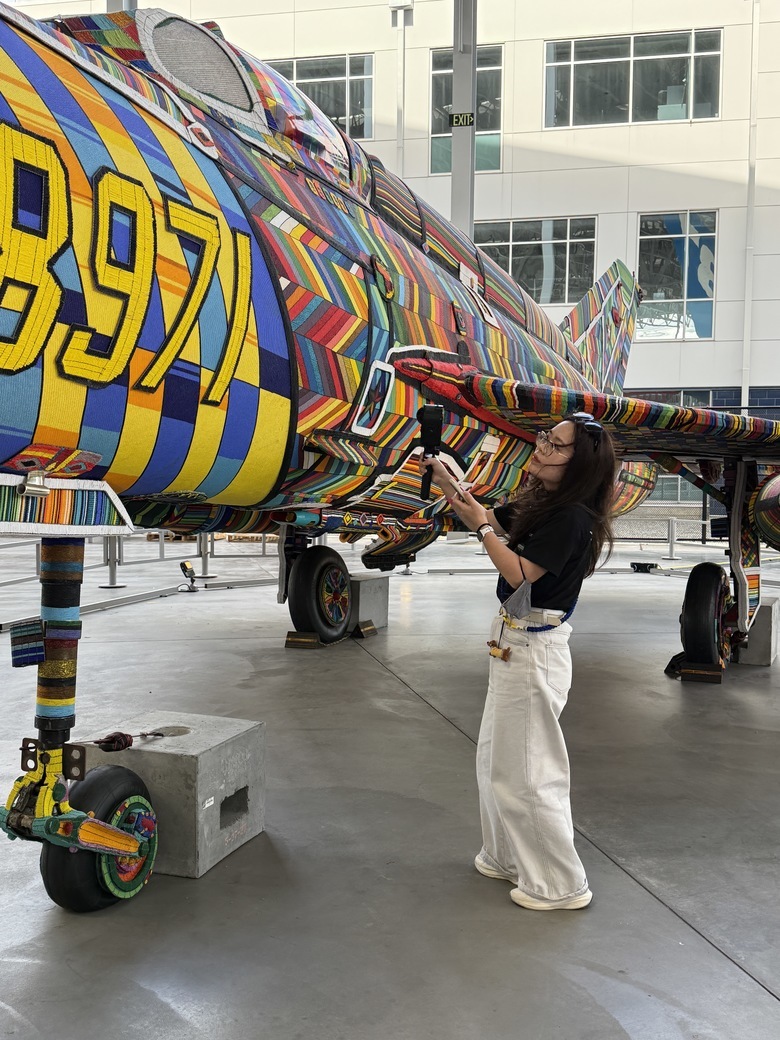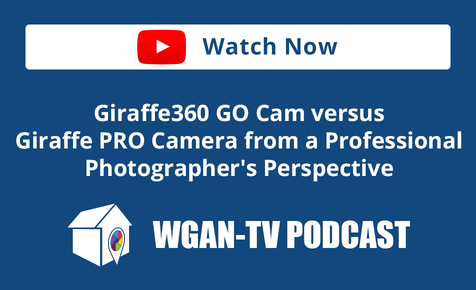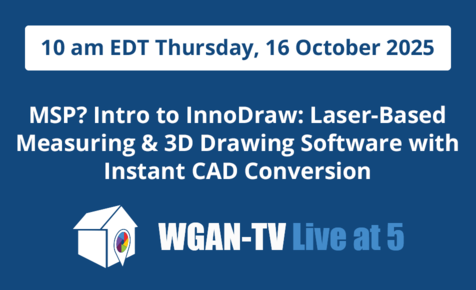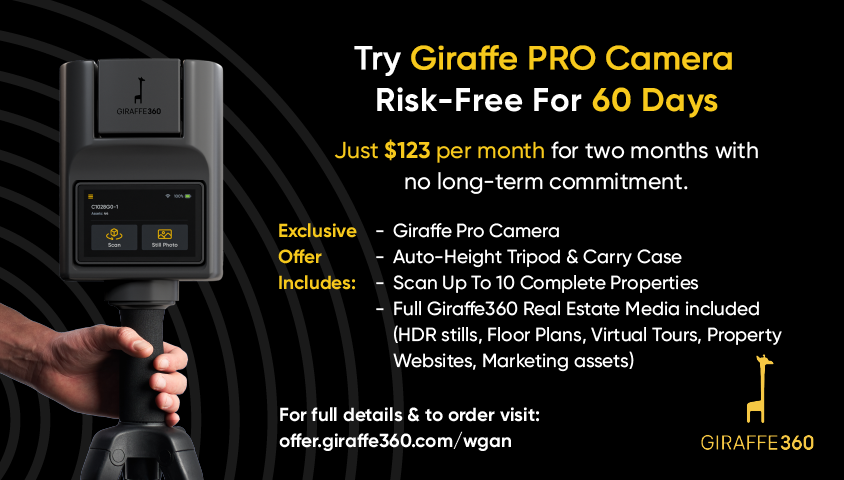[R&D] Beaded MiG-21 in 3D: Gaussian Splatting + XGRIDS PortalCam21175
Pages:
1
 Tosolini TosoliniProductions Bellevue, Washington |
Tosolini private msg quote post Address this user | |
We used the newly released XGRIDS PortalCam to 3D-capture the MiG-21 Project — South African artist Ralph Ziman’s five-year transformation of a decommissioned Soviet-designed MiG-21 into a stunning artwork covered in tens of millions of colorful glass beads. Special thanks to Peder Nelson (The Museum of Flight, Seattle), Mack Kowalski (Lidaholics International), Fay Yu (XGRIDS), and Timothy Allan (SeekBeak). Link to interactive experience (desktop only): https://app.seekbeak.com/v/V6zaK75gqeZ  Fay Yu of XGRIDS scanning the MiG-21 at The Museum of Flight in Seattle, USA. |
||
| Post 1 • IP flag post | ||
 WGAN Forum WGAN ForumFounder & WGAN-TV Podcast Host Atlanta, Georgia |
DanSmigrod private msg quote post Address this user | |
| @Tosolini Wow! Crazy exciting. Looks great on my MacBook Pro. What tech is missing on my iPhone that I can not use my iPhone. Best, Dan |
||
| Post 2 • IP flag post | ||
 Tosolini TosoliniProductions Bellevue, Washington |
Tosolini private msg quote post Address this user | |
| @dansmigrod. I asked the question of the mobile limitation to the SeekBeak developer. I'm condensing his answer below: The big one is simply the splat count, it’s 4.1 million splats that all get loaded via a compressed ply file. A few people who are doing splats commercially have found that a general rule of thumb is that budget Androids phones can display up to 500k, and newer iPhones can be pushed to 1-1.5 million before they start to break down. This is why someone developing a level-of-detail/chunked style loader is so necessary, so it will only load/show what’s needed, rather than the whole thing. Second issue is the super splat compressed .ply format. There is an issue where iOS loads a super splat compressed ply file fine the first time, then won’t load it again. I think it's still early days of this format on mobile, but it's quite promising. |
||
| Post 3 • IP flag post | ||

|
inmerso3D private msg quote post Address this user | |
| Great work, Paolo @Tosolini . Thanks for sharing. One question: I see this model has 4.1 million splats, but what is the approximate size of the .ply file? And if you’ve had the chance to compare, with the same .ply file, which viewer is lighter or better, Seekbeak or 3DVista? |
||
| Post 4 • IP flag post | ||
 Tosolini TosoliniProductions Bellevue, Washington |
Tosolini private msg quote post Address this user | |
| @inmerso3d Thanks! The original splat processed from Xgrids software was 460MB. After cropping it in Supersplat and compressing it, it came out 77MB. If I'm not mistaken, when I tried it in 3DVista, it couldn't recognize the compressed PLY from Supersplat. I may have to find another way to process it for 3DVista. The file loaded fine in SeekBeak. | ||
| Post 5 • IP flag post | ||

|
MeshImages private msg quote post Address this user | |
| @tosolini maybe try to get an .SPZ format for 3Dvista. SPZ is the Scaniverse format which is also in discussions to be standardized in the future .glb versions. The XGRids LCC file format which is used in the portalcam workflow is a proprietary format, it does not offer a direct export to SPZ yet, so you will need another tool in-between. | ||
| Post 6 • IP flag post | ||

|
inmerso3D private msg quote post Address this user | |
| Thanks for the reply @Tosolini and @MeshImages Yes, when exporting to different formats, compatibility issues sometimes arise. For example, I haven’t been able to open the `.ply` exported from Polycam in 3DVista, even though the latter does support .ply I assume it’s not a fully standard .ply. It’s definitely a continuous learning process while the industry standards are still being defined. |
||
| Post 7 • IP flag post | ||
 Tosolini TosoliniProductions Bellevue, Washington |
Tosolini private msg quote post Address this user | |
| @meshimages I spent some time today to export various 3DGS into different formats, namely PLY, SPLAT and SPZ. I tried to import them into 3DVista and SeekBeak for a quick comparison. Here are my findings: 3DVista Fails to show SPZ (20MB) and PLY (190MB) from Scaniverse, SPLAT (52MB) and compressed PLY (92MB) from SuperSplat Editor, PLY (220MB) from Polycam. In short, when I load any of these files, I get an empty editor screen. Not sure if I'm doing something wrong, but my tests haven't been successful. Maybe somebody else from the community can verify my outcome. I know there are other 3DGS processing tools but they require an Nvidia card and I run on a Mac. SeekBeak I'm able to import PLY, SPZ and SPLAT files as long as they are <100MB. They seem to process fine. Beyond SPZ, there seems to be another emerging format called SOG that is trying to become a 3DGS standard: https://blog.playcanvas.com/playcanvas-open-sources-sog-format-for-gaussian-splatting/ |
||
| Post 8 • IP flag post | ||

|
MeshImages private msg quote post Address this user | |
| Seekbeak is a great platform, but unfortunately we cannot really use it in Europe without all these GDPR requirements (cloud-hosted in non-EU-state - with Amazon as far as I know). Therefore I have stopped following their development. I am fully on selfhosted solutions now. And I have not found the time to dive deeper into Playcanvas. Filesize for SPZ seems to be really good! SPZ is currently they way to go for me, because you can capture, process and export locally on iPad oder iPhone with Scaniverse. Don't know what's the reason for not playing in 3DVista. On Mac you are probably using AnnxStudio. This may be reason 1. Reason 2 may be the original LCC file format from the PortalCam workflow which is used from capture to processing in the XGrids LCC software. I guess their ply is converted from their LCC. But not sure about this. They are not publishing anything on this. Actually this proprietary workflow is still holding me back from jumping on Xgrids. I am looking for more open alternatives than the proprietary LCC. I'm not going from Matterport into the next lock-in situation. |
||
| Post 9 • IP flag post | ||
 Tosolini TosoliniProductions Bellevue, Washington |
Tosolini private msg quote post Address this user | |
| @meshimages Thanks for pointing me to Annx Studio. I didn't know about it, so I'll take a look. At this time, I mostly scan with Polycam. Scaniverse is OK. I'll report back on XGRIDS PortalCam once I get it. What do you use to add interactivity to 3DGS? There are not many solutions out there. On a side note, I tried today Meta Horizon Hyperscape Capture on my Quest 3. Impressive results, although the model is trapped in Meta's system and is unusable other than for viewing it (and to train Meta's AIs of course). Thanks! |
||
| Post 10 • IP flag post | ||

|
MeshImages private msg quote post Address this user | |
| Great points @tosolini! I’m also considering PortalCam — it looks like the most performant device in the market right now. So, I should have it in the portfolio. However, I fear that they will become another golden cage just like Matterport. In the early days, Matterport’s open ecosystem let us freely access all the 3D scan and image data, but we all know how tightly controlled things became over time. For interactivity and storytelling, I use 3DVista since I am familiar with it for years. With some vibe-coding-like approach, I could also get into Krpano. One feature I really appreciate is Krpano’s player navigation, which in my eyes is much better than supersplat by Playcanvas. The flexible navigation with these Roblox-style touch controllers makes navigation very intuitive. But Playcanvas (Supersplat) has also been used in impressive commercial integrations, especially for digital commerce in Shopify. What I really love is the concept of Arrival.space. Arrival.Space lets you mix tools and workflows, connecting spaces with talking avatars, portals, AI and code and of course interactive touchpoints. Christoph Schindelars arrival.space shows a nice collection of features and a great collection of splats. This one by Scannerian is also great! Regarding Meta Horizon — I initially had similar doubts, but after listening to the final statement of this podcast episode my perspective changed. If Meta makes Horizon content playable across all Meta platforms (Facebook, Instagram, WhatsApp, QuestOS...), the creative reach for builders and storytellers could be absolutely massive, potentially billions of users. |
||
| Post 11 • IP flag post | ||
 Tosolini TosoliniProductions Bellevue, Washington |
Tosolini private msg quote post Address this user | |
| Thanks @meshimages for the useful pointers. Some thoughts: My hope for XGRIDS is to not take the MP route by restricting their PortalCam too much. If they start feeling that consumer cameras costing 1/10th can provide good enough results, they will be pressured to lower prices or act accordingly. To me the PortalCam is a device that has maybe a 8-12 months of market advantage before another Chinese company creates something similar. XGRIDS seems to have an edge with the software though. On Krpano, their approach to GS is very cool. The platform to me seems a bit complicated and needs coding, thus my draw to no-code tools. I'll need to look into Arrival.space. On Meta Horizon, I just posted on Linkedin my Hyperscape Capture test. Very promising, especially if Meta is making this format available on their multiple platforms. |
||
| Post 12 • IP flag post | ||

|
MeshImages private msg quote post Address this user | |
| I forgot to mention 2 platforms that I am also diving into at the moment. One is Unreal Engine, which I guess will become as accessible in the near future as no-code tools are today due to AI assistance and MCP or vibecoding. Unreal Engine is also supporting 3DGS with a variety of plugins, one from Volinga. I found out, that the Epic/Unreal ecosystem only needs some Beharrlichkeit (German word - similar to continuity) to pick it up. Like in Blender, where I finally have some basic skills now. This LinkedIn post inspired me and motivates me that if you have the time and focus, you can get far in Unreal Engine in a very short period of time And the other is Microsoft Teams and other communication tools as they are rolling out no-code immersive meeting features with 3D Avatars and support of different devices. I see great market potential in this. |
||
| Post 13 • IP flag post | ||
 Tosolini TosoliniProductions Bellevue, Washington |
Tosolini private msg quote post Address this user | |
| I think learning Unreal is a big undertaking with potentially great payoff. I look forward to hear about your journey. And good idea about exploring Microsoft Teams. I haven't thought about it. On a side note, if you have an Insta360, this startup may offer a nice solution for conversion of their INSV file format to 3DGS: https://splatica.com/ |
||
| Post 14 • IP flag post | ||
Pages:
1
















